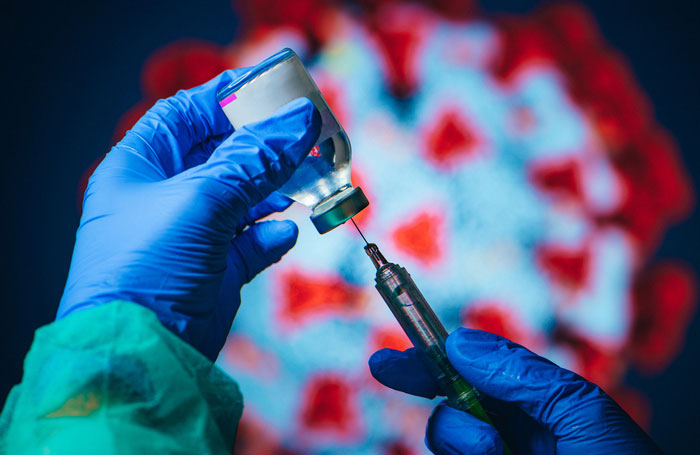
As disappointing and grim as 2020 turned out to be, we finally have a sign of hope towards the end of this year. Within a fortnight, two pharma giants announced their own COVID-19 vaccine, both of which are nearly 95% effective. One of these is Moderna, who on Monday declared that their shots provide strong protection against the coronavirus. According to reports, Moderna said that its vaccine appears to be 94.5% effective. These figures are drawn from the company’s on-going study.
Moderna, along with its long-standing competitor Pfizer, is now rallying to seek permission and approval to put the vaccine to emergency use in the US. This news definitely comes as a ray of hope when the virus is showing no signs of abating, not only in the United States but across the world. Statement from Moderna’s President
Moderna’s current president, Dr. Stephen Hoge, hailed the efforts of the dedicated team at Moderna while mentioning that this is an important milestone for Moderna. He also emphasized the fact that the two companies showing similar results were the most reassuring fact. Considering the global demand for the vaccine, Dr. Hoge said that Moderna will not solve this problem alone and that Pfizer’s results too, were promising.
Current Status of COVID-19 in the States
Virus cases are consistently surging in the United States, with the virus cases topping 11 million over the weekend. The past week itself reported 1 million cases. While the pandemic has killed more than 1.3 million people across the world, the US has reported 245,000 of these deaths.
Approval of the Vaccines
Even if the Food and Drug Administration approves the vaccine for emergency use, there will be limited, rationed supplies before the end of this year. Once the vaccine is approved and out, people will have to get themselves vaccinated twice. The second shot has to be taken several weeks after the first shot. This means that a huge quantity of this vaccine has to be produced by both Moderna as well as Pfizer. By the end of 2020, Moderna will have 20 million doses, for specific usage in the United States. On the other hand, Pfizer and its German partner, BioNTech expect to have around 50 million doses globally by the year-end.
Cautions to Consider
As Moderna continues extensive research about the viability and effectiveness of the vaccine, they have acknowledged that the protection rate might change as more COVID-10 infections are detected. Additionally, both Pfizer and Moderna have cautioned that it is too soon to know how long the protection lasts. Muscle pain, fatigue, and injection-site pain after the vaccine’s second dose are side effects commonly noted in the 30,000 volunteers who have signed up for the vaccine trials.
What’s Different in These Vaccines?
Both Moderna and Pfizer’s shots are the mRNA vaccines. With this brand new technology, the vaccine isn’t made of the virus itself, but it contains a piece of genetic code that trains the immune system to detect the spiked protein on the surface of the virus.
Distribution Challenges
Both these doses need to be kept in cold temperatures. This may prove to be a major challenge when it comes to distribution. Moderna’s doses can last longer (up to 30 days) than earlier thought, once thawed. On the other hand, Pfizer’s shots require long-term, ultra-cold temperatures.
Summing Up
All hopes are pinned on these promising results shown by Moderna and Pfizer, and all we now need are speedy trials and a quick approval process to get the vaccine out in the global market.
RELATED ARTICLES
Recent Posts
- Major Theft Ring Busted: Over $200,000 in Stolen Lego Sets Recovered in Eugene, Oregon
- Judge Denies Texas’ Bid to Shut Down Migrant Shelter Network in El Paso
- Single Mother in Memphis Seeks Help for Troubled Son Amid Rising Concerns
- California’s Proposition 47 Reform Sparks Intense Political Debate Over Public Safety
- U.S. Man’s Social Security Benefits Denied Over Citizenship Confusion
Categories
Our Supporters
Gold Supporters
Christopher Simon – Atlanta Truck Accident Lawyer
Skiver Law Firm – Phoenix Truck Accident Lawyer
Winer, Burritt & Scott, LLP – Los Angeles Clergy Abuse Law Firm
Michael E. Fenimore P.A. – Pensacola Car Accident Lawyer
Pillsbury & Coleman, LLP – San Mateo Long Term Disability Lawyer
The Law Office of Randall J. Wolfe, P.C. – Oregon City Personal Injury Lawyer
Davies Hothem Injury Law – Buford, GA Car Accident Attorney
Houston Federal Criminal Defense Attorney
Darrow Law Firm – Houston Federal Crime Lawyer
Kansas City Personal Injury Lawyer
Atlanta Truck Accident Attorney
Aitken *Aitken* Cohn Trial Lawyers – Santa Ana Personal Injury Attorneys
Dawson Law Group- Portland Personal Injury Attorneys
CT Mediation Center- New Haven Family Law Attorney
Little Rock Personal Injury Lawyer
Katy Car Accident Lawyer
Franklin Divorce Attorney
Palermo Law- Long Island Personal Injury Lawyer
Dan Rose – San Francisco Car Accident Attorney
Taylor Siemens – Liberty, MO Personal Injury Attorneys
Pfeifer Law Firm – Little Rock Car Accident Lawyer
Walkup, Melodia, Kelly & Schoenberger – San Jose Car Accident Attorney
Solomon, Dwiggins, Freer & Steadman – Las Vegas Business Litigation Lawyer
Roane Law – Asheboro NC Car Accident Lawyer
Dorsch Law Firm – Overland Park Estate Planning Attorney
The Tennessee Sledgehammer – Hermitage, TN Car Accident Lawyer
Cook Law Group – Gainesville, GA Car Accident Lawyer
Simon Bridgers Spires – Atlanta Personal Injury Lawyer
Injury Law Associates – Kansas City Motorcycle Accident Lawyer
Potts & Potts – Honolulu Personal Injury Attorney

